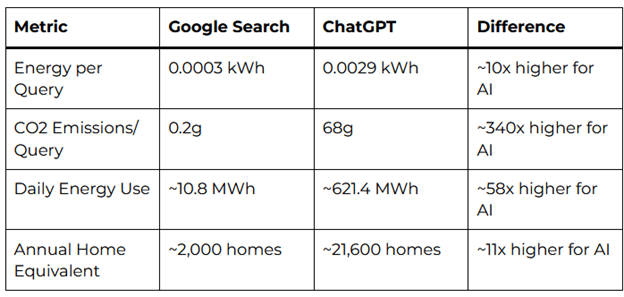
Last week, I lamented permanent tax credits that balloon the national debt, drive up interest rates, and exponentially increase borrowing costs. Two things have happened since:
- The House passed its version of the “One Big Beautiful Bill Act” (OBBBA), which took the shears to “clean energy” and storage tax credits (except for sacrosanct ethanol), and
- Due to the ineffectiveness of the bill in slashing the deficit, the premium on the 10-year treasury over short-term maturity securities has increased to its highest level in 11 years. The rate on the 30-year treasury is at its highest in 20 years. These higher rates draw capital away from new power generation, which becomes more expensive with higher interest rates.
A Nuclear Executive Order
Meanwhile, the President signed an executive order that states nuclear power shall get moving, which is great but should have been done during the first year of his first term, so we’d be digging dirt and pouring concrete by now. The EO seeks to “overhaul the U.S. nuclear regulator, fast-track licenses for new projects, boost domestic fuel supplies, and use federal lands for reactors for the military or large data centers for artificial intelligence.”
The goal of the EO is to quadruple nuclear power production in 25 years. Go big or go home, I would say! In recent years, nuclear power produced just under 20% of the nation’s electricity, with a capacity factor of 90%.
While the rest of our industry is crying about the cessation of tax credits for renewables and batteries, I haven’t seen any alleluias for producing the equivalent of 80% of our electricity today, carbon-free with nuclear power. That would be astonishing and better than blanketing states with solar panels. For review, here is one of my best assessments of decarbonizing the electricity supply with nuclear power.
A Gap and a Long Time
However, 25 years is quite a long time, leaving plenty of time for energy efficiency and effective, necessary, and critical load management. On top of that, the OBBBA’s euthanasia of solar, wind, and battery tax credits will add substantially more grid stress in the next ten years. How? Something is better than nothing. As for storage – battery and thermal, it is agnostic toward its source of electrons. Early pumped hydro and thermal storage were developed for nuclear and coal-fired generation[1], respectively.
Three years ago, I compared grid resources to football positions. Now, weapons are a more appropriate allegory because the time required and capacity to generate power and reliability vary from the BB Gun of solar panels to an aircraft carrier battle group for nuclear power. The Wall Street Journal notes, “new plants take years to be approved and permitted and a decade or longer to build.”
For practical purposes, if we said go today, one could probably produce a high school graduate from scratch (18 years) faster than a nuclear power plant. Fifty years ago, it took only seven years to build a commercial nuclear power-generating station.
Slower by the Decade
Congress authorized the nation’s first successful nuclear power plant in 1951, and in barely four years (!), it was churning out 20-plus knots at sea under the developmental direction, innovation, and fanatical drive of Hyman Rickover, the “Father of the Nuclear Navy” (which celebrated its 75th anniversary last summer)! Rickover started with nothing but an idea and was sailing under nuclear power in four years, before handheld calculators existed. We may not be getting dumber, but we’re demonstrably becoming more dependent on technology, less innovative, and less creative. Just think what AI will do to us! It reminds me of 1984 again.
Figure 1 Post-AI Drones with Bad Breath
 Speaking of Rickover, Naval Nuke School was/is modeled after Rickover’s time-compression model. In 1991, my class of 14 nuke-school students finished a master’s curriculum in nuclear engineering in barely five months, 30 hours of class instruction per day, er, week, plus “capstone” projects. We rued how soft we had it because we cheated with the blazing 80286 processor (pre-Windows) to optimize one variable at a time to design a fast, lightweight, and safe submarine nuclear reactor plant. We gaped, “Just think of the poor bastards in the 1960s and 1970s using slide rules to do this stuff.” They were probably finished and drinking gin and tonics in half the time it took us to dial it in with brute force.
Speaking of Rickover, Naval Nuke School was/is modeled after Rickover’s time-compression model. In 1991, my class of 14 nuke-school students finished a master’s curriculum in nuclear engineering in barely five months, 30 hours of class instruction per day, er, week, plus “capstone” projects. We rued how soft we had it because we cheated with the blazing 80286 processor (pre-Windows) to optimize one variable at a time to design a fast, lightweight, and safe submarine nuclear reactor plant. We gaped, “Just think of the poor bastards in the 1960s and 1970s using slide rules to do this stuff.” They were probably finished and drinking gin and tonics in half the time it took us to dial it in with brute force.
Brute Force Majeure
Artificial intelligence is the epitome of brute force, and that’s why it takes enormous electrical power. Brains are creatively lazy or efficient, depending on your perspective. Each GW of data center is the equivalent of 50 million human brains in terms of energy consumption. What if the brains were creative? Could ChatGPT solve the Apollo 13 crisis? Good luck with that, Commander.
This all reminds me of Jevons’ Paradox, in which “efficiency” results in greater energy consumption. As noted in the Jevons post, “Efficiency can be a transformatively nebulous term that means many different things to many different people.” In the case of AI, it means more computation with fewer human brains and the expense of an insanely high electricity (and resources) bill per Figure 2.
Figure 2 AI’s Brain, Electricity, and Water Drain
 Scarce creativity and brute-force computations mean one thing to engineers: entropy. AI entropy factories require massive nuclear power buildouts, necessitating suffocating bureaucratic regulatory entropy.
Scarce creativity and brute-force computations mean one thing to engineers: entropy. AI entropy factories require massive nuclear power buildouts, necessitating suffocating bureaucratic regulatory entropy.
Efficiency is the desired result divided by the cost, which may be energy consumption, dollars, or other resources to produce it. AI may be decent in terms of computation, but it is terrible in terms of desired outcomes defined as fast, bold, and elegant, as in simple.
Forced Outages or Load Management
Interior Secretary Doug Burgum wants to make “sure that we’ve got enough power to be able to win the AI arms race with China.” However, barring an act of war, or God help us, another Covid boondoggle, the federal government cannot impose its will on the grid, physics, states’ rights, and NIMBY. The collective bureaucracies will have their way. “We’re not going to build our way out of this.” What does that mean? Voluntary load management at market rates or forced load management with rolling outages. It looks good for us!
[1] Conversation with Paul Steffes, Founder, Steffes
